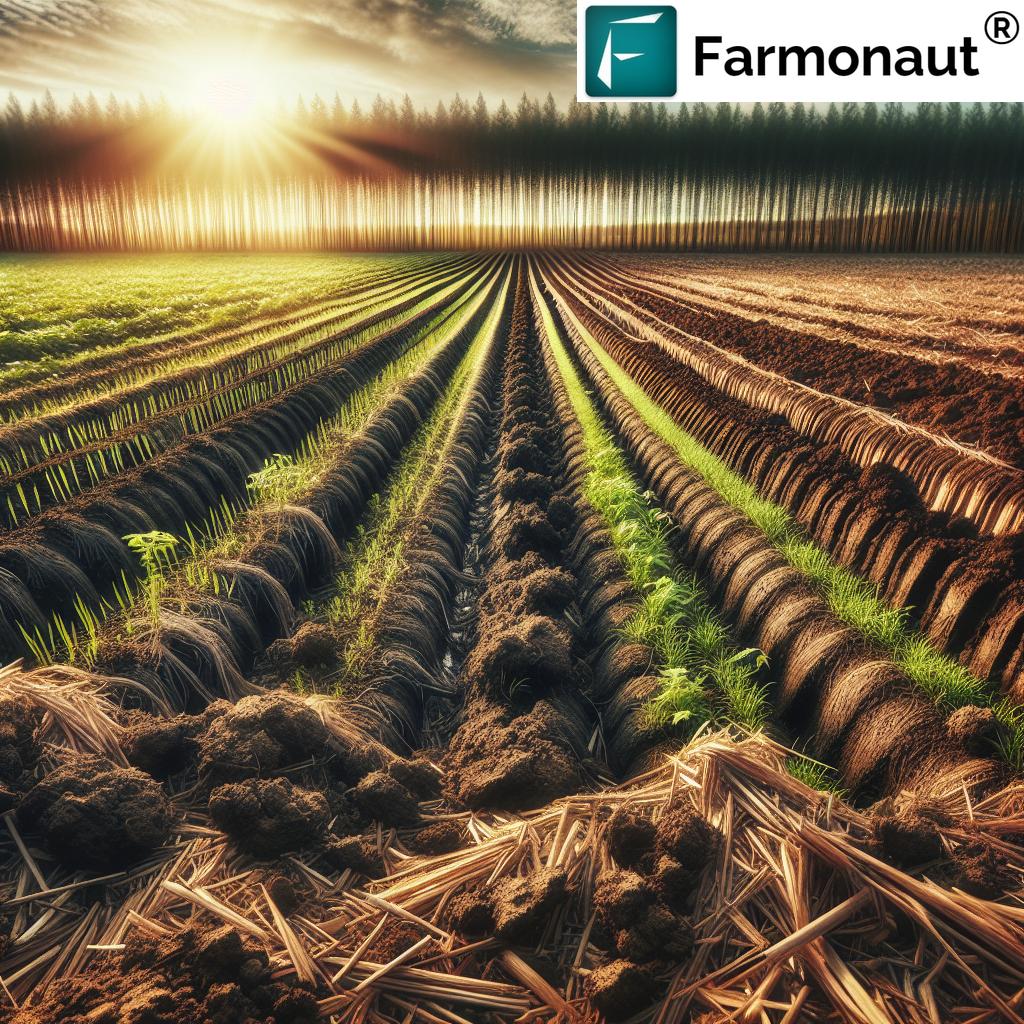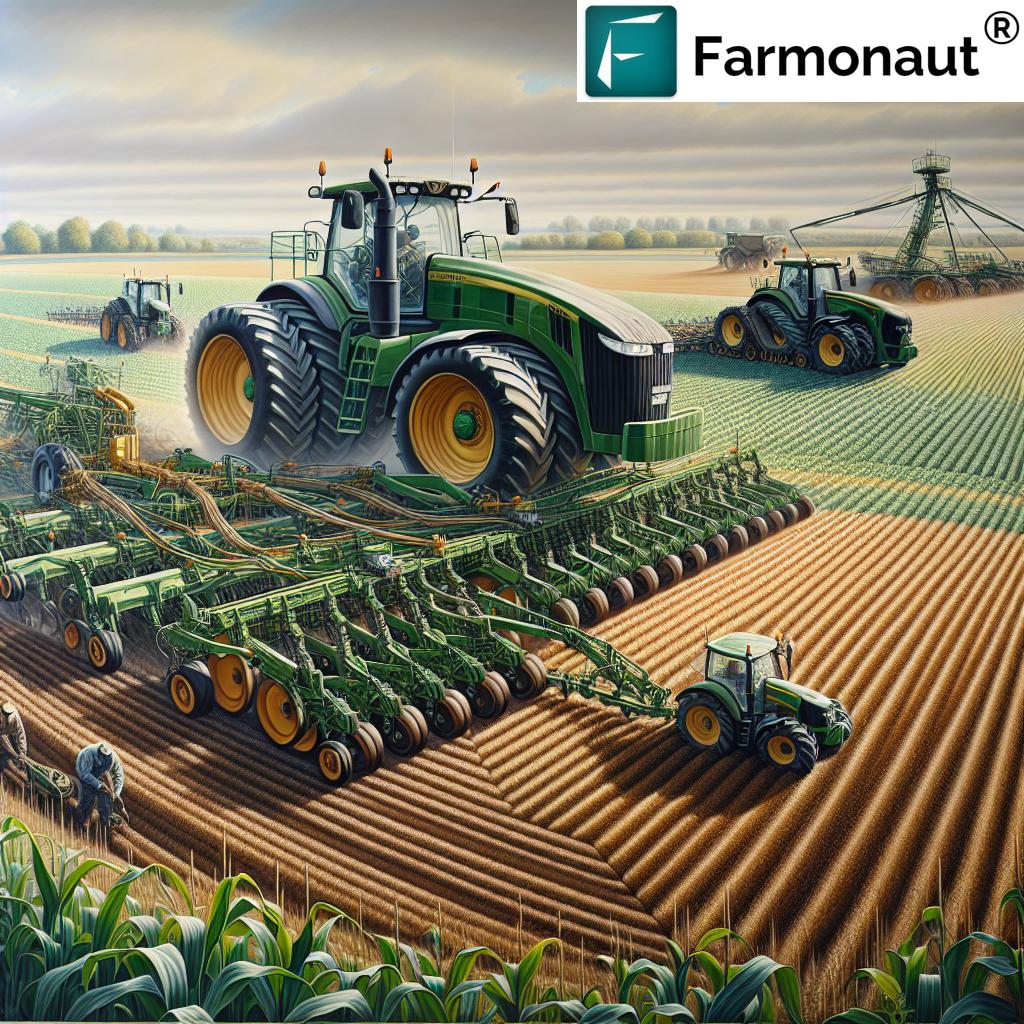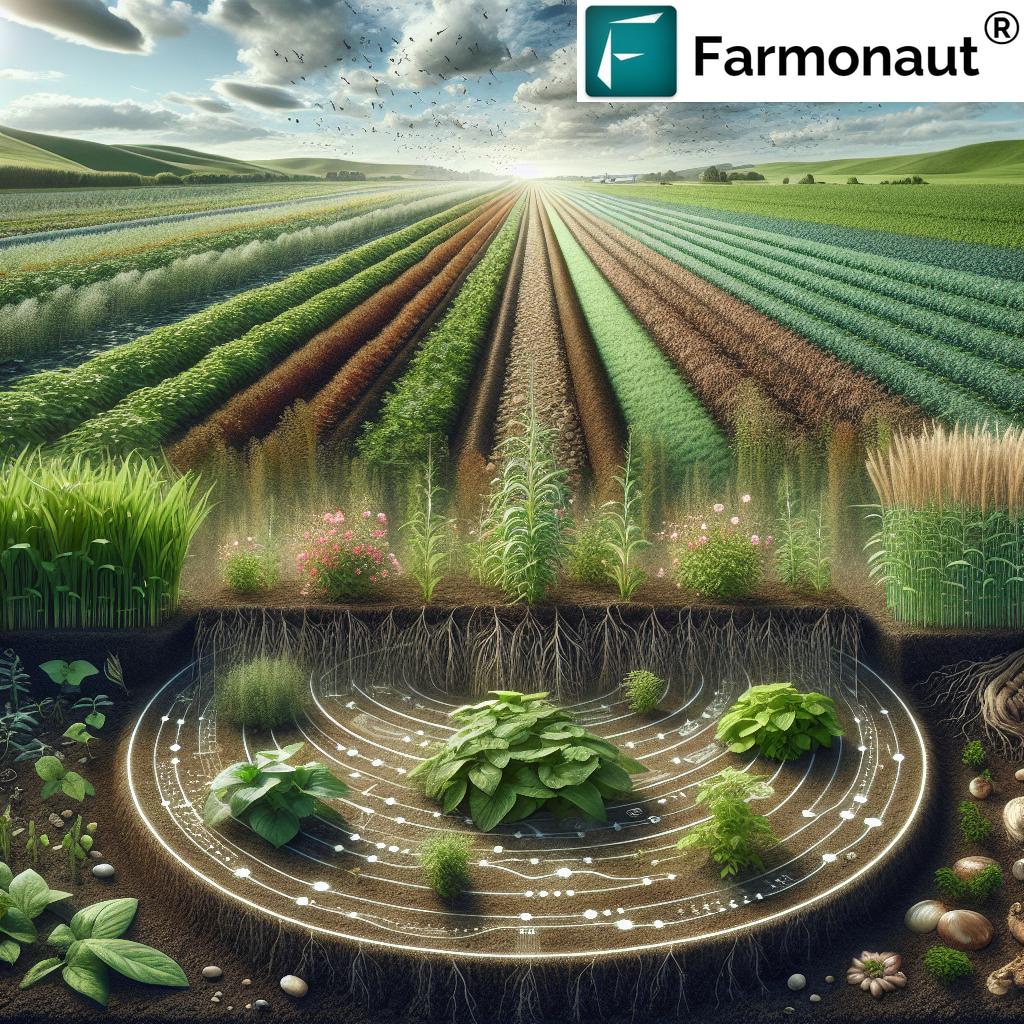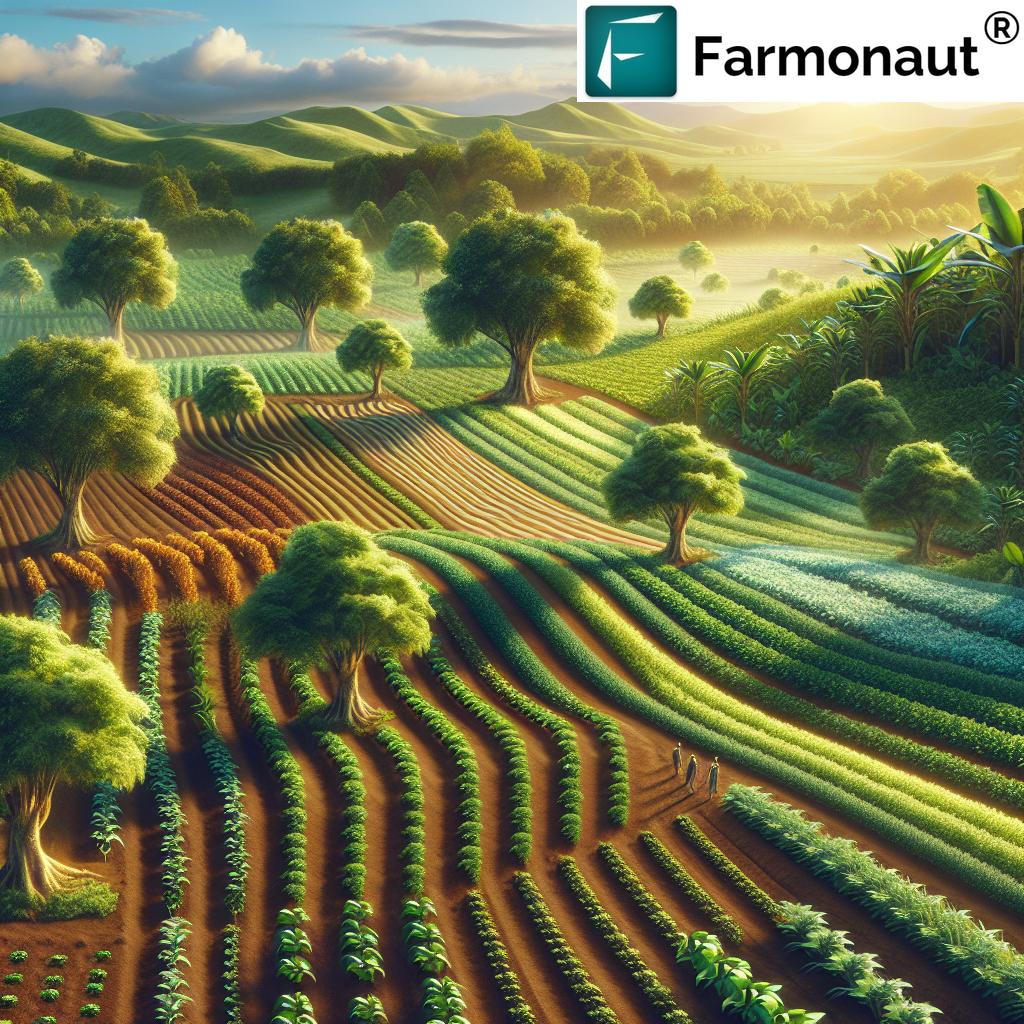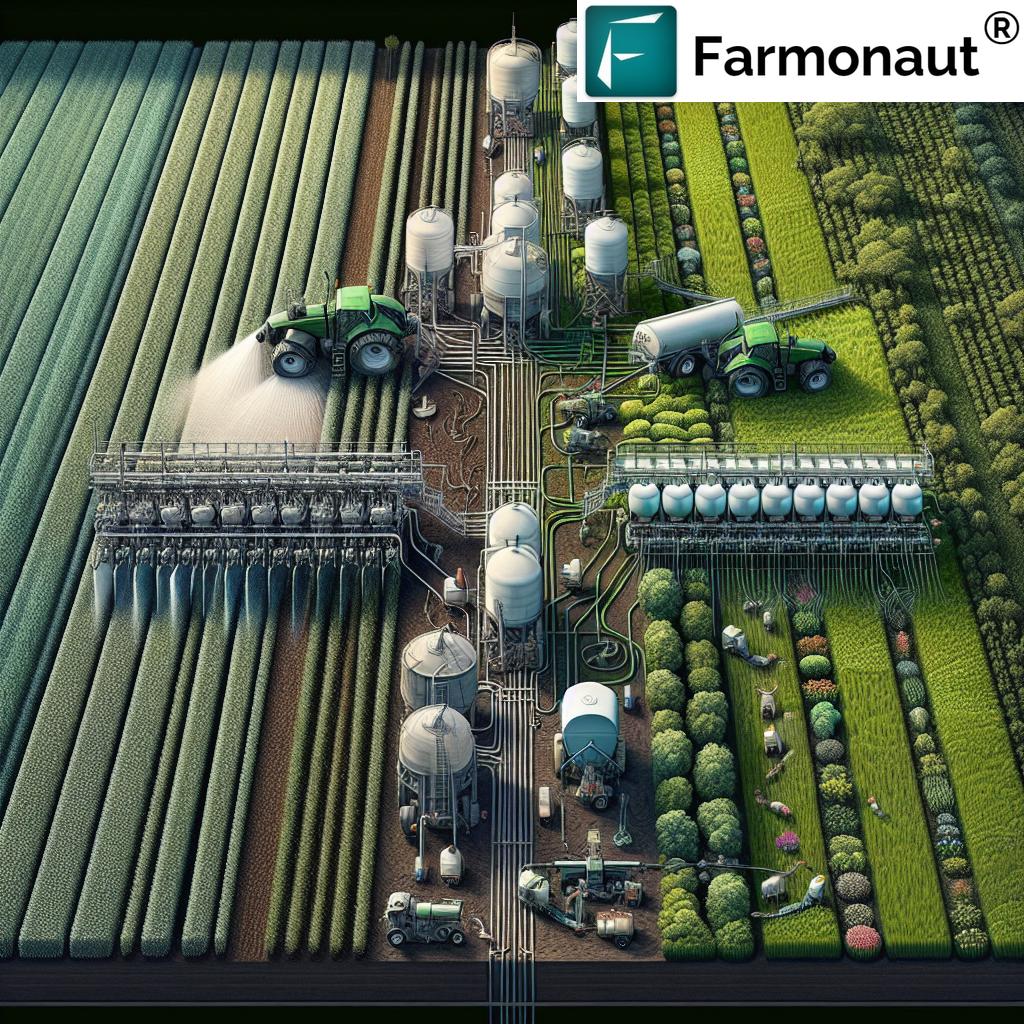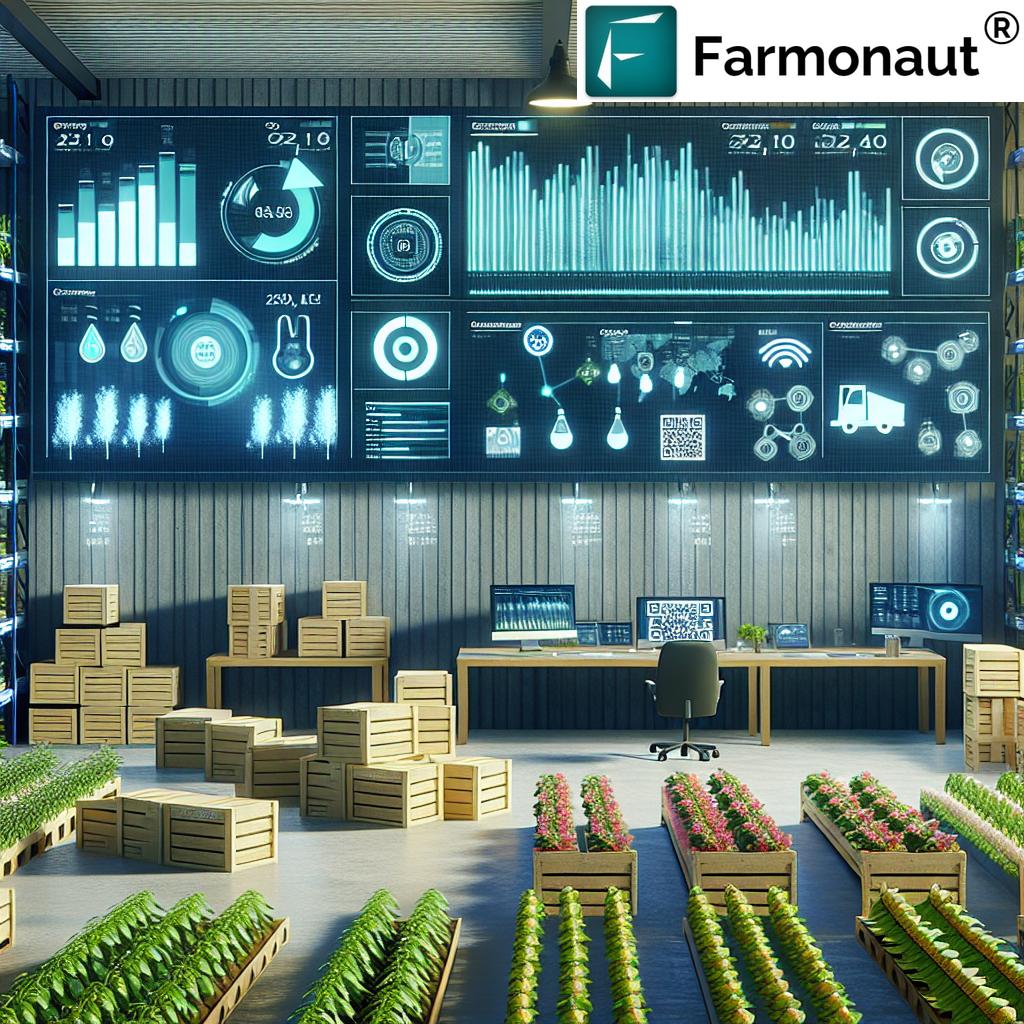Crop Cultivation: 7 Sustainable Soil Practices
“Over 33% of the world’s soils are degraded, making sustainable soil practices vital for future food security.”
Introduction: The Vital Role of Crop Cultivation and Soil Health
Crop cultivation is a fundamental aspect of agriculture, encompassing the practices and techniques used to grow plants for food, fiber, medicinal, and other uses. The cultivation process involves selecting appropriate crops, preparing the soil, planting, managing growth, and harvesting. With changing global conditions, such as climate change and increasing demand for productive land, modern agriculture is evolving rapidly. Our focus has shifted toward sustainable farming practices to ensure both long-term soil health and the success of future generations of farmers.
Healthy soil lies at the core of agricultural productivity. From tillage methods to the incorporation of organic matter, every step in crop management impacts fertility, soil structure, and overall crop yields. By exploring traditional vs modern agriculture and harnessing innovative solutions, we can enhance sustainability, resource efficiency, and environmental stewardship.
Traditional Crop Cultivation Methods and Their Limitations
Historically, crop cultivation relied heavily on traditional methods such as tillage, which involves preparing the soil through mechanical actions like plowing, harrowing, and cultivating. These methods serve to aerate the soil, mix organic matter, and help in controlling weeds. However, excessive tillage disrupts soil structure, accelerates nutrient depletion, and can result in severe soil erosion.
The rise of conservation tillage methods such as no-till and reduced tillage was a response to these significant limitations. In no-till farming, seeds are planted directly into undisturbed soil, preserving moisture and organic soil life. As we look closer at sustainable solutions, it’s crucial to compare traditional vs modern agriculture and adapt best-fit strategies for each plot and local conditions.
Why Sustainable Soil Practices Matter
The health and resilience of our agricultural systems depend on the conservation of natural resources, especially soil. Sustainable soil practices not only enhance fertility and productivity but also mitigate the negative impact of climate change, reduce input costs, and ensure environmental stewardship.
Let’s dive deep into the top seven sustainable soil practices for crop cultivation, with actionable steps and the latest scientific insights on building climate-resilient, productive agricultural systems.
Crop Cultivation Techniques: 7 Sustainable Soil Practices
Below, we systematically explore and clearly define each sustainable soil practice. We’ll highlight their role in soil health management, environmental conservation, and the significant crop productivity benefits they offer.
1. Conservation Tillage Methods
Conservation tillage methods include no-till, strip-till, and reduced tillage. Traditional tillage often involves full mechanical agitation, which, while mixing organic matter and disrupting weeds, can cause substantial erosion and disturb soil organisms. In contrast, conservation tillage leaves a substantial portion of crop residue on the surface, reducing erosion and preserving soil structure.
- No-till: Planting seeds directly into undisturbed soil, which conserves soil moisture and minimizes disruption of beneficial microbial life.
- Reduced tillage: Limits soil disturbance while facilitating essential processes like aerating and integrating organic matter.
Benefits: Enhanced soil health, reduced input costs, and long-term productivity due to preserving soil moisture and decreasing nutrient depletion.
Farmonaut Fleet Management Tools
— Optimize equipment usage and implement precision tillage with real-time machinery tracking!
2. Cover Cropping Benefits
Planting cover crops—such as legumes, grasses, or brassicas—is a practice used primarily to manage soil health rather than for direct harvest. Cover crops help prevent soil erosion, improve soil fertility (especially with nitrogen-fixing legumes), suppress weeds, and enhance organic matter in soil.
- Legumes: Fix nitrogen, reducing the need for synthetic fertilizers.
- Grasses: Improve soil structure and prevent erosion through dense root systems.
- Brassicas: Break compacted soil layers and enhance microbial diversity.
Incorporating cover cropping into crop rotation is essential for building resilient, productive systems. The cover cropping benefits extend to improved water infiltration, reduced compaction, and increased biodiversity.
Farmonaut Carbon Footprinting Solutions
— Measure and reduce your crop’s carbon footprint for more sustainable cropping!
“Adopting cover crops can reduce soil erosion by up to 90%, significantly improving long-term soil health.”
3. Agroforestry Systems
Agroforestry systems integrate trees and shrubs into crop lands. This fusion of agricultural and forestry practices enhances biodiversity, improves soil fertility, and increases resilience to climate change by stabilizing and improving microclimates.
- Shelterbelts: Trees planted along field edges protect crops from wind erosion and create beneficial habitats.
- Alley cropping: Alternating rows of crops and trees optimize light, rainfall percolation, and organic matter cycling.
- Multi-strata systems: Combining short, medium, and tall vegetation layers for maximum land use efficiency.
Agroforestry provides additional income sources through fruits, nuts, timber, and non-timber forest products, promoting local sustainability, and supporting climate resilient crops.
Farmonaut Crop Plantation and Forest Advisory
— Leverage satellite-driven tree detection and mapping for advanced agroforestry planning!
4. Enhanced Organic Matter in Soil
The organic matter in soil—decomposed plant and animal residues—plays an instrumental role in building soil structure, improving fertility, and retaining moisture. Sustainable methods such as integrating crop residues, composting, or green manures are key for improving soil organic carbon and boosting soil health.
- Compost application: Adds nutrients, stimulates beneficial microorganisms, and enhances water retention.
- Leaving crop residues: On the surface reduces erosion and feeds soil biota.
- Green manures: Quick-growing cover crops that are incorporated into soil increase fertility.
Enhancing organic matter lays the groundwork for sustainable farming practices. Over time, fields with restored soil organic carbon show greater productivity and resilience against droughts and heavy rains.
5. Crop Rotation Strategies
Crop rotation is the practice of planting different crop species sequentially on the same plot over time. This disrupts pests and disease cycles, enhances soil fertility, and allows for efficient nutrient management.
- Legume–cereal rotation: Legumes fix nitrogen, preparing the soil for nutrient-demanding crops like corn or wheat.
- Root–leaf–fruit rotation: Prevents soil-borne diseases by alternating root crops, leafy greens, and fruiting plants.
Incorporating crop rotation improves yields and improves overall soil health while minimizing reliance on synthetic chemicals. It’s one of the most sustainable crop cultivation techniques recognized globally.
6. Sustainable Mulching Techniques
Mulching covers the soil’s surface with organic materials or synthetic barriers to preserve soil moisture, reduce erosion, suppress weeds, and moderate soil temperature.
- Organic mulches: Use straw, wood chips, or crop residues for nutrient addition as they decompose.
- Plastic mulches: Common in vegetable farming to conserve water and protect young plants.
Mulching is an accessible, cost-effective step in sustainable soil health management, promoting robust plant growth and better yields.
7. Regular Soil Testing and Nutrient Management
Regular soil testing provides critical data on nutrient levels, pH, and organic content. By understanding the soil profile, farmers can tailor fertilizer applications, avoid nutrient imbalances, and ensure efficient resource use.
- Test frequency: At least once per year or by season for intensive crops.
- Interpreting results: Use farm management tools to analyze and implement the right strategies.
Implementing data-driven nutrient management reduces overfertilization, saves costs, and supports sustainable farming practices.
Farmonaut Weather & Satellite Data API — Connect your system for powerful soil and crop health data insights.
Developers: Farmonaut API Developer Docs
Comparison Table of Sustainable Soil Practices
| Practice Name | Environmental Impact (e.g., % Organic Matter Increase) |
Benefits for Crop Productivity (Yield Improvement %) |
Estimated Implementation Cost | Crop Type Suitability |
|---|---|---|---|---|
| Conservation Tillage Methods | +15–20% soil organic matter over 5 years, 20–50% less erosion | 5–10% yield increase, improved water efficiency | Medium (Equipment required) | Cereals, Oilseeds, Pulses |
| Cover Cropping Benefits | +0.3–1% organic matter/year, up to 90% erosion reduction | 5–20% yield boost due to better nutrient cycling | Low-Medium | Most annuals, specialty crops |
| Agroforestry Systems | +25–35% biodiversity, +2–5% organic matter | Long-term 10–15% yield increase, plus diversified products | High (Trees require upfront investment) | Row crops, perennial crops, orchards |
| Enhanced Organic Matter | +1.0–2.5% organic matter in 5 years | Improves overall yields, resilience to stress | Low | Universal |
| Crop Rotation Strategies | +10–20% fertility retention, better pest management | 5–25% yield gain due to reduced pest & nutrient loss | Low | Cereals, legumes, vegetables |
| Sustainable Mulching Techniques | +0.5–1.5% organic matter, cuts evaporation by 25–50% | 10–30% higher early-season moisture, less weed competition | Low–Medium | Vegetables, fruits, ornamentals |
| Soil Testing & Nutrient Management | Reduces nutrient losses, prevents overfertilization | 5–25% yield improvement via precision input | Low (basic lab testing) | All crop types |
How Farmonaut Empowers Sustainable Crop Cultivation
We at Farmonaut believe that precision, technology, and actionable data are critical catalysts for advancing sustainable farming practices. Our platform is designed to bridge the gap between traditional knowledge and modern, innovative methods.
- Satellite-Based Crop Health Monitoring: We provide farmers with real-time insights into vegetation health (NDVI), soil moisture, and pest stress, letting users make informed decisions that boost crop yields and conserve resources.
- AI-Driven Advisory: Our Jeevn AI system delivers on-the-ground recommendations and weather forecasts for managing growth, controlling weeds, and optimizing soil fertility.
- Blockchain-Based Traceability: We offer blockchain-backed traceability for transparent supply chains, vital for food and fiber products in today’s marketplace.
- Fleet and Resource Management: Our solutions help manage field logistics, fertilizer application, and resource allocation, reducing waste and operational costs.
- Carbon Footprinting: We enable agribusinesses to track and lower their environmental impact—a cornerstone for environmental stewardship and climate-friendly agriculture.
- Crop Loan & Insurance: With our satellite verification tools, accessing credit and protecting investments becomes more accessible for small and large farmers alike.
- Large Scale Farm Management: Leveraging our enterprise management platform, big agribusinesses and government agencies can orchestrate sustainable crop planning, area estimation, and multi-crop strategies with efficiency.
Farmonaut’s technology is accessible through web, iOS, Android apps, and APIs, making powerful soil health management and resource optimization tools universally available.
Challenges and The Future of Crop Cultivation
While advances in agricultural science and technology have unlocked novel soil health management strategies, we face significant challenges: climate change, ongoing soil degradation, the necessity for more arable land, and the imperative to ensure food security for a growing global population.
Future directions in sustainable crop cultivation include:
- Developing climate-resilient crops with greater tolerance for drought, heat, and pests
- Adopting integrated pest and nutrient management for reduced reliance on chemicals
- Harnessing data-driven technologies like those pioneered by Farmonaut to optimize every step from soil to supply chain
- Advancing agroecological and regenerative methods to rebuild lost soil organic matter across degraded landscapes
By combining the wisdom of traditional methods with the potential of modern innovation, we can continue to cultivate more nutritious food, fiber, and medicinal plants while strengthening the integrity of our agricultural systems.
Frequently Asked Questions on Sustainable Soil Practices
Q1: What is the most impactful sustainable soil practice for small-scale farmers?
Cover cropping and mulching are cost-effective, highly beneficial for improving soil health and reducing erosion, making them ideal for most smallholdings.
Q2: How does conservation tillage improve productivity over time?
Conservation tillage protects soil structure, reduces organic matter loss, and enhances water retention, resulting in greater long-term yields and lower input needs.
Q3: Can modern technology help implement these sustainability practices?
Yes. Precision platforms like Farmonaut enable real-time health monitoring, moisture mapping, and resource planning, making sustainable transitions easier and more measurable.
Q4: Why is regular soil testing important?
Soil testing prevents over- or under-application of nutrients, optimizing both economic returns and environmental stewardship. It forms the foundation of modern soil health management.
Q5: What is shifting cultivation, and is it sustainable?
Shifting cultivation involves cultivating plots for a few years, then allowing them to regenerate. While it can restore soil fertility naturally, if overused, it may lead to deforestation and loss of biodiversity without proper management techniques.
Conclusion: Embracing Sustainability for Productive Agriculture
To achieve optimal crop productivity and ensure food security, it’s essential to combine crop cultivation techniques that prioritize soil conservation, enhance fertility, and build ecosystem resilience.
By embracing sustainable soil practices—from conservation tillage and cover cropping to advanced resource management with Farmonaut—farmers can restore and maintain healthy, productive soils.
Together, we can secure a vibrant, sustainable agricultural future.






